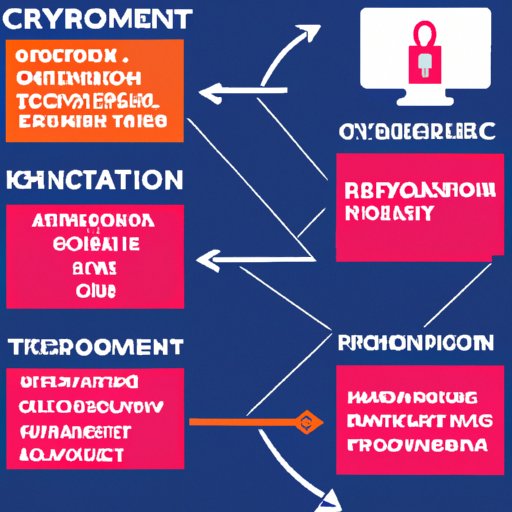Introduction
Cybersecurity posture is a term used to describe an organization’s overall security stance and the measures taken to protect its data and systems from cyber threats. It is a critical component of an organization’s risk management strategy and requires ongoing evaluation and improvement. In this article, we will explore the basics of cybersecurity posture and how organizations can improve their posture to better protect themselves from cyber attacks.
The Basics of Cybersecurity Posture and What It Means
At its core, cybersecurity posture is the set of practices and strategies that an organization uses to protect itself from cyber threats. This includes both technical and non-technical measures such as network security, user education and training, and policies and procedures. A strong cybersecurity posture requires a holistic approach that takes into account all aspects of an organization’s security environment.
Understanding the components of cybersecurity posture is essential for organizations to properly assess and manage their security risks. The most common components of cybersecurity posture include:
- Network security – Includes measures such as firewalls, antivirus software, and intrusion prevention systems.
- User education and training – Ensures users are aware of the risks associated with using the internet and how to protect themselves from cyber threats.
- Policies and procedures – Establishes expectations for employees and outlines the steps necessary to respond to security incidents.
- Vulnerability management – Regularly identifies and assesses system vulnerabilities and develops plans to address them.
It’s important to note that the components of cybersecurity posture are always changing as new threats emerge and technology evolves. Organizations must be vigilant in monitoring these changes and updating their posture accordingly.
Examining the role of cybersecurity posture in risk management is also important. When assessing and managing risks, it’s important to consider not only the technical aspects of security but also the operational, financial, and reputational implications. A strong cybersecurity posture helps organizations identify, assess, and mitigate risks in order to protect their assets and operations.
How to Improve Your Organization’s Cybersecurity Posture
Exploring the benefits of having a strong cybersecurity posture is an important part of understanding why it’s so important. A strong cybersecurity posture can help organizations protect their data and systems from cyber threats, reduce the costs associated with responding to security incidents, and maintain customer trust and confidence. Additionally, a strong posture can help organizations comply with industry regulations and standards, such as the Payment Card Industry Data Security Standard (PCI DSS).
Implementing best practices for maintaining an effective cybersecurity posture is essential for organizations to protect themselves from cyber threats. These best practices include:
- Conducting regular vulnerability assessments to identify and address system weaknesses.
- Developing and implementing policies and procedures for responding to security incidents.
- Educating users on cybersecurity best practices and providing ongoing training.
- Ensuring systems are adequately protected with up-to-date security solutions.
- Regularly monitoring systems and networks for suspicious activity.
Organizations should also consider investing in tools and services to help monitor and manage their cybersecurity posture. These tools can provide visibility into the security posture of their systems and alert them to potential threats or vulnerabilities.

Examining the Impact of Weak Cybersecurity Postures on Businesses
Analyzing the financial impacts of weak cybersecurity posture is essential for organizations to understand the potential costs associated with a security breach. These costs can include lost revenue, legal fees, fines, and reputational damage. The cost of a security breach can vary depending on the severity and scope of the incident and the size of the organization.
Evaluating the operational impacts of weak cybersecurity posture is equally important. A security breach can have serious operational consequences, including disruption of services, downtime, loss of data, and damage to customer relationships. Organizations must understand the potential operational impacts of a security breach in order to properly prepare for and respond to incidents.
Conclusion
In conclusion, cybersecurity posture is an essential component of an organization’s risk management strategy. Organizations must understand the components of cybersecurity posture and how to improve their posture in order to protect their data and systems from cyber threats. Additionally, they must consider the potential financial and operational impacts of a security breach in order to adequately prepare for and respond to incidents. By taking the necessary steps to strengthen their cybersecurity posture, organizations can minimize the risks associated with cyber threats.
This article has provided an overview of cybersecurity posture and how organizations can improve their posture to better protect themselves from cyber threats. For more information on cybersecurity posture and risk management, please consult the recommended resources below.
Recommendations for Further Reading
- Center for Internet Security
- European Union Agency for Network and Information Security
- SANS Institute
- National Institute of Standards and Technology
-
(Note: Is this article not meeting your expectations? Do you have knowledge or insights to share? Unlock new opportunities and expand your reach by joining our authors team. Click Registration to join us and share your expertise with our readers.)
